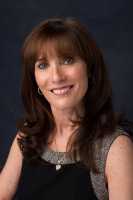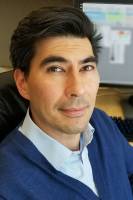Heart Disease Biomarkers, Including Lipoprotein(a) Elevated in Psoriasis
COVID-19: More Hand Scrubbing Linked to Greater Risk of Cracked Dry Hands
 Response: The COVID‐19 pandemic requires stringent adoption of hand hygiene practices. Health Care Workers (HCW) and the general population are at increased risk of irritation, dryness, redness and cracked hands (irritant dermatitis) due to frequent hand washing and the use of alcohol-based hand rubs. An effective hand sanitizer contains at least 60% alcohol to kill germs. Thus, it can be very drying to the skin. Transepidermal water loss (TEWL) is a way to measure the water lost from the skin. It is an essential parameter for characterizing skin hydration and protective function. Both of which are disrupted in irritant hand dermatitis.
This research study was conducted on 582 participants: 291 health care workers and 291 healthy individuals of the general population. Measurements of TEWL were made using a noninvasive, closed- chamber system (VapoMeter) in a standardized environment. The study participants were asked to identify the challenges to compliance in hand hygiene practice (more…)
Response: The COVID‐19 pandemic requires stringent adoption of hand hygiene practices. Health Care Workers (HCW) and the general population are at increased risk of irritation, dryness, redness and cracked hands (irritant dermatitis) due to frequent hand washing and the use of alcohol-based hand rubs. An effective hand sanitizer contains at least 60% alcohol to kill germs. Thus, it can be very drying to the skin. Transepidermal water loss (TEWL) is a way to measure the water lost from the skin. It is an essential parameter for characterizing skin hydration and protective function. Both of which are disrupted in irritant hand dermatitis.
This research study was conducted on 582 participants: 291 health care workers and 291 healthy individuals of the general population. Measurements of TEWL were made using a noninvasive, closed- chamber system (VapoMeter) in a standardized environment. The study participants were asked to identify the challenges to compliance in hand hygiene practice (more…)Reassuring Study of Topical Steroids During Pregnancy
AI Facilitates Diagnosis of Skin Conditions By Primary Care Providers
Psoriasis: Monoclonal Antibody Bimekizumab vs Secukinumab: Faster, More Complete Clearing
How to Treat a Wound Properly
If your wound is bleeding profusely, seeking medical help immediately is crucial....
Medical Marijuana as Therapeutic Option for Intractable Itch
Future randomized controlled studies are needed to determine dosing, efficacy, and safety of medical marijuana for the treatment of various...
Mechanism of Horrible Itching of Liver Disease Identified in Superficial Skin Cells
Attending Physician, Duke Neurology Clinics for Headache, Head-Pain and Trigeminal Sensory Disorders
Attending Physician, Duke Clinics for Innovative Pain Therapy at Brier Creek (Dept of Anesthesiology)
Duke University School of Medicine, Center for Translational Neuroscience
Durham NC 27710 Since April 2021 Chair of Neurology Global Development Scientific Council Regeneron Pharmaceuticals Tarrytown NY 10591 MedicalResearch.com: What is the background for this study? Response: There are systemic diseases that are characterized by intense itching, yet without inflammation of the skin and not associated with allergic inflammation. For example and importantly, liver disease with non-functional secretion of bile (cholestatic liver disease, most common primary biliary cholangitis, an autoimmune disease), but also chronic end-stage renal disease (also certain lymphomas and pruritic psoriasis where the itch is whole-body, not only restricted to diseased skin). We thought that these diseases might be great starting points to better understand itch because there is no inflamed skin and no allergies. Thus, there must be some systemic factor that causes itch, and we were intent on discovering such factors, and with them, molecular mechanisms how they cause itch. For cholestatic liver disease, one of the best candidates to fit this profile has been lysophosphatidic acid (LPA), since the pioneering discoveries of Andreas Kremer, one of our co-authors. My research laboratory at Duke has been rooted in my discovery of TRPV4 ion channels 20 years ago, out of the Friedman Lab at The Rockefeller University in NYC. Over the years, with my colleague Yong Chen out of my lab, now leading his own independent research operation, we focused on the role of TRPV4 ion channels in skin. 5 years ago Yong and I published a paper that provided some evidence for TRPV4 in skin perhaps playing a role in itch. Working with phospholipids, we made the serendipitous discovery that lysophosphatidyl choline (LPC) is a more potent itch-inducing lipid molecule than LPA. Of note, LPC is the metabolic precursor of LPA. We then found that LPA does not depend on TRPV4 to elicit itch. The more robust itch evoked by LPC was significantly reduced when we knocked down TRPV4 in skin keratinocytes. Itch was NOT affected when TRPV4 was deleted from sensory nerve cells that innervate the skin. In terms of background, my long-term goal has been to elucidate how innervating peripheral nerve cell and innervated organ, such as skin, talk to one another so that the sensation that is felt is regulated or modulated, e.g how can skin influence itch or pain, how can joint cells influence pain. That became the exciting bedrock of our study, and we took it from there, 5 years of hard work with collaborations spanning the globe, and a final stretch of exhausting work during the pandemic. (more…)
WaterWipes Care Bundle Linked to Reduced Facial Injuries from PPE During COVID Pandemic
MedicalResearch.com Interview with: [caption id="attachment_57059" align="alignleft" width="200"] Jill Sommerville[/caption] Jill Sommerville M.Sc. Director of Medical at WaterWipes MedicalResearch.com: What is the background for this...
COVID-19 Causes Marked Reduction in Skin Sebum Profile
Efficiency of Melanoma High-risk Clinics in Detecting New Skin Cancers
If you have low self-esteem you might be reluctant to try new things for fear it will make you feel...
COVID-19: Study of Orthodox Community Suggests Transmission of SARS-CoV-2 Occurred Far Earlier Than Previously Recognized
Dermatology: Financial Reimbursements Better for White Males, Primarily Due to Treatment of Premalignant Lesions and Biopsies
WaterWipes Can Help Reduce Diaper Dermatitis
Once Daily Five-Day Course of Novel Topical Agent Clears Actinic Keratoses
New Itch Pathway Helps Explain Why Antihistamines Don’t Always Work
Dermatologist Discusses Removal of Black Dye From Henna Tattoos
Hand Eczema: Patch Testing Important in Diagnosis of Potential Allergens
Study Finds Minimal Risk of Inhaled Nanoparticles from Sunscreen Application
Skin Conditions Associated with Down Syndrome
Melanoma: Gene Profile Test Can Help Pathologists Identify Difficult-To-Diagnose Lesions
Contact Allergic Reaction to Face Masks Reported
Finasteride: Study Investigates Suicidality and Psychological Adverse Events
Multiple Cutaneous Squamous Cell Carcinomas are a Growing Health Care Burden
Non-Absorbable Microbe Has Potential To Reduce Inflammatory Disorders Including Psoriasis
 Firstly, the background to Evelo and the therapeutic EDP1815: Evelo is developing orally administered biologic medicines based on a new understanding of how systemic inflammation is controlled. Evelo’s medicines are selected for their ability to modulate the small intestinal axis, or SINTAX, a network of anatomical and functional connections that has evolved to connect the small intestine with the rest of the body. SINTAX links small intestinal mucosal immunology with systemic inflammation and is now accessible with oral medicines. This inflammatory control pathway may enable a new class of products which are effective, safe, and can be manufactured affordably at large scale.
EDP1815 is a non-live pharmaceutical preparation of a strain of the bacterium Prevotella histicola isolated from the duodenum of a human donor. Its pharmacodynamic effect is through interactions with the immune cells within the small intestine and it has no systemic absorption. These local interactions in the small intestine then downregulate systemic inflammation. In fact, the inflammatory control afforded by targeting the small intestinal axis appears to result in the coordinated downregulation of multiple inflammatory pathways without immunosuppression, mimicking the body’s normal physiological processes of inflammation resolution.
Secondly, there is the key and exciting background pre-clinical data on EDP1815 – the details of which have been published today at the EADV conference. For example, oral administration of EDP1815 to mice has been shown to lead to striking therapeutic effects in in vivo models of delayed-type hypersensitivity, imiquimod-induced skin inflammation, fluorescein isothiocyanate cutaneous hypersensitivity, collagen-induced arthritis, and experimental acute encephalomyelitis (EAE).
The consistency of effect and dose shows that EDP1815 can coordinately resolve systemic inflammation across TH1, TH2 and TH17 pathways. This suggests the potential for clinical benefit across multiple diseases.
And, thirdly, there is the clinical unmet need for an oral, safe, effective treatment specifically for mild and moderate psoriasis patients, who have very limited treatment options outside of the poorly tolerated topical therapies, and these patients are reported to be dissatisfied with treatment options and therefore are often under-treated.
These three points explain the background to EDP1815 and the reason for progressing forward into the phase 1b in psoriasis.
(more…)
Firstly, the background to Evelo and the therapeutic EDP1815: Evelo is developing orally administered biologic medicines based on a new understanding of how systemic inflammation is controlled. Evelo’s medicines are selected for their ability to modulate the small intestinal axis, or SINTAX, a network of anatomical and functional connections that has evolved to connect the small intestine with the rest of the body. SINTAX links small intestinal mucosal immunology with systemic inflammation and is now accessible with oral medicines. This inflammatory control pathway may enable a new class of products which are effective, safe, and can be manufactured affordably at large scale.
EDP1815 is a non-live pharmaceutical preparation of a strain of the bacterium Prevotella histicola isolated from the duodenum of a human donor. Its pharmacodynamic effect is through interactions with the immune cells within the small intestine and it has no systemic absorption. These local interactions in the small intestine then downregulate systemic inflammation. In fact, the inflammatory control afforded by targeting the small intestinal axis appears to result in the coordinated downregulation of multiple inflammatory pathways without immunosuppression, mimicking the body’s normal physiological processes of inflammation resolution.
Secondly, there is the key and exciting background pre-clinical data on EDP1815 – the details of which have been published today at the EADV conference. For example, oral administration of EDP1815 to mice has been shown to lead to striking therapeutic effects in in vivo models of delayed-type hypersensitivity, imiquimod-induced skin inflammation, fluorescein isothiocyanate cutaneous hypersensitivity, collagen-induced arthritis, and experimental acute encephalomyelitis (EAE).
The consistency of effect and dose shows that EDP1815 can coordinately resolve systemic inflammation across TH1, TH2 and TH17 pathways. This suggests the potential for clinical benefit across multiple diseases.
And, thirdly, there is the clinical unmet need for an oral, safe, effective treatment specifically for mild and moderate psoriasis patients, who have very limited treatment options outside of the poorly tolerated topical therapies, and these patients are reported to be dissatisfied with treatment options and therefore are often under-treated.
These three points explain the background to EDP1815 and the reason for progressing forward into the phase 1b in psoriasis.
(more…)DUOBRII® : Halobetasol and Tazarotene Combination Lotion May Provide Durable Psoriasis Remission
I served as lead author on the study, which was presented Fall Clinical Dermatology Conference this weekend in a poster titled, “Long-term management of moderate-to-severe plaque psoriasis: maintenance of treatment success following cessation of halobetasol propionate 0.01%/tazarotene 0.045% lotion.”
(more…)




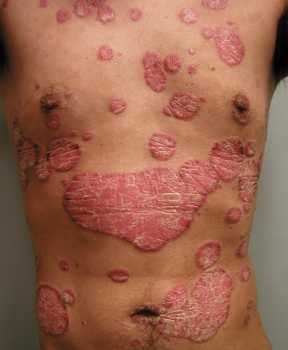







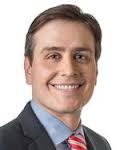




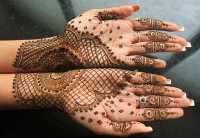






![MedicalResearch.com Interview with: Selin Tokez, PhD Student Department of Dermatology Erasmus MC, Rotterdam MedicalResearch.com: What is the background for this study? Response: Cutaneous squamous cell carcinoma (cSCC) is the second most common skin cancer worldwide with still increasing incidence rates. Given these high incidence rates together with the associated health costs and possibility of fatal progression, it is extremely important to have accurate and complete data on the epidemiology of this disease. Nevertheless, national cancer registries in many countries do not routinely record cSCC cases and therefore currently known numbers are mainly based on incomplete data sources. Additionally, if cSCC cases are registered, this usually only concerns the first cSCC per patient while we know that, contrary to many other malignant neoplasms, patients may develop numerous cSCCs over time. MedicalResearch.com: What are the main findings? Response: In the present study, we analyzed Dutch nationwide data comprising about 145,000 patients with a first invasive cSCC diagnosis between the years 1989 and 2017. We found that the incidence rates of a first cSCC per patient almost tripled in male patients and increased about fivefold in female patients in this 30-year time period. Also, we had data on all cSCCs per patient for the year 2017 and could therefore compare this with the data on only the first cSCC per patient: incidence rates increased by 58% for men and 35% for women when multiple cSCCs were considered. In absolute numbers, this resulted in an increase of 45% in cSCC diagnoses in 2017. Lastly, we extended our analyses by predicting future cSCC incidence rates up to 2027. Given that no substantially effective measures are undertaken in the near future, current cSCC incidence rates will increase with 23% in males and 29% in females in the next decade. MedicalResearch.com: What should readers take away from your report? Response: We could summarize our main message in two points: while people generally know that cSCC is a very common disease with increasing incidence rates, it is not taken into account that these numbers are often based on incomplete data registries and that the real numbers are even higher. In this paper, we provided these numbers for a period of 30 years based on highly accurate data from the Netherlands Cancer Registry. On top of that, as a second main finding, we showed that the real burden caused by cSCC is approximately 50% higher (taken males and females together) when all cSCC diagnoses in 1 year are registered instead of only the first tumor per patient. Together with our prediction analyses that showed an on average 26% further increase for the coming decade, this will have enormous implications for the dermato-oncological health care planning and cost management. Our results urgently call for revision of skin cancer health policies to be able to cope with this rising burden of cSCC management. Ultimately, primary prevention will remain the key strategy to halt the increasing trend in cSCC incidence and the occurrence of multiple cSCCs per patient, which we hope to further stimulate with our paper as well. MedicalResearch.com: What recommendations do you have for future research as a result of this work? Response: As we had data on multiple cSCCs for only one year, we would suggest to perform trend analyses for multiple cSCCs per patient as well when a longer follow-up duration has been reached. Furthermore, it would be very relevant to identify high-risk cSCCs or patients at risk for multiple cSCCs in order to be able to establish efficient follow-up regimens and take these high risk groups into account when revising skin cancer health policies. MedicalResearch.com: Is there anything else you would like to add? Response: The authors of this study have no conflicts of interest that are relevant to this article. Citation: Tokez S, Hollestein L, Louwman M, Nijsten T, Wakkee M. Incidence of Multiple vs First Cutaneous Squamous Cell Carcinoma on a Nationwide Scale and Estimation of Future Incidences of Cutaneous Squamous Cell Carcinoma. JAMA Dermatol. Published online October 28, 2020. doi:10.1001/jamadermatol.2020.3677 [subscribe] Last Modified: [last-modified] The information on MedicalResearch.com is provided for educational purposes only, and is in no way intended to diagnose, cure, or treat any medical or other condition. Always seek the advice of your physician or other qualified health and ask your doctor any questions you may have regarding a medical condition. In addition to all other limitations and disclaimers in this agreement, service provider and its third party providers disclaim any liability or loss in connection with the content provided on this website.](https://medicalresearch.com/wp-content/uploads/2020/10/squamous-cell-cancer-dermnetnz-image.jpg)
